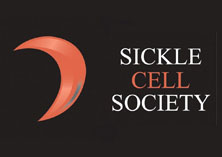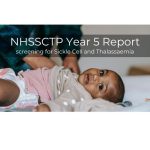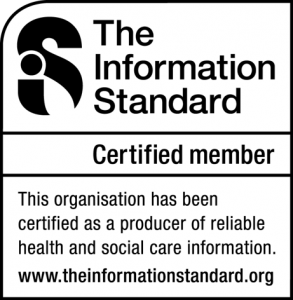This is a report on external research. It is not endorsed by the Sickle Cell Society and does not form part of our Information Standard-accredited information
Marilyn Roberts-Harewood Specialists Registrar in Haematology Central Middlesex Hospital, London, UK
The Multicentre Study of hydroxyurea (MSH), published in 1995, was a randomised controlled trial performed in America, which enrolled 299 severely affected adults with homozygous sickle cell disease, Hb SS, and compared the outcomes in patients treated with hydroxyurea or a placebo (an inactive compound). The trial looked specifically at the impact of hydroxyurea therapy on rates of painful vaso-occlusive crises (VOC), episodes of acute chest syndrome and the number of blood transfusions required, and the results were so overwhelming in favour of hydroxyurea that the trial was terminated after 22 months, and all participants were offered hydroxyurea. This led investigators to wonder whether hydroxyurea could be used in patients with other complications of sickle cell disease, other types of sickle cell disease, and children. Infants are generally asymptomatic in the first six months of life due to the presence of large amounts of fetal haemoglobin (Hb F), which interacts with sickle haemoglobin (Hb S) and inhibits sickling. As the Hb F level declines during the first year of life, symptoms are more likely to occur. Some prognostic indicators of disease severity in children that have been identified include dactylitis (painful swelling of hands and/or feet) before the age of one year, a haemoglobin level of less than 7g/dl and a raised white cell count in the absence of infection. Low Hb F levels, acute chest syndrome, renal failure and seizures are associated with a severe phenotype and increased risk of early mortality. To date available therapies for children with severe sickle cell disease have been transfusion programmes and bone marrow transplantation with their attendant limitations and morbidities. Hydroxyurea has been shown to improve quality of life and decrease mortality in patients with sickle cell disease and offers an alternative. Specific questions regarding the use of hydroxyurea in children include its impact on growth and development, prevention of chronic organ damage, and its role in stroke.
Hydroxyurea has been shown to increase Hb F, haemoglobin and mean corpuscular volume of red cells; it also decreases the white cell count and platelet count and appears to exert a number of other beneficial effects by improving red cell hydration, decreasing cytokine production and red cell adhesion. Increasingly, hydroxyurea is being used throughout the world in children and at least nine studies have been published in the literature.
Hydroxyurea in Paediatric Patients:Potential Benefits
- Prevention or delay of fetal (HbF) to adult (HbS) haemoglobin production
- Prevention of organ dysfunction
- Reverse early vascular disease
- Maintain splenic function
- Improve growth
Hydroxyurea is available in capsules, and can be formulated into a suspension which is given once daily. Starting doses are generally around 15gm/kg/day and may be escalated by 5mg/kg/day until the maximum tolerated dose is reached, alternatively the dose may be increased until clinical benefit is obtained. Hydroxyurea is well tolerated in children with the main short term toxicity being cytopenias, which is generally a fall in the white cell count, in particular neutrophils (neutropenia). This is readily reversible but emphasizes the need for patients receiving hydroxyurea to attend for regular blood tests. Should neutropenia occur hydroxyurea should be temporarily discontinued until recovery occurs, and then recommenced at a lower dose, the maximum tolerated dose (MTD). Whilst the majority of patients respond well to hydroxyurea, there is a subgroup that appears not to respond. Compliance is always called into question, but some patients are non-responders for reasons that are not understood.
The majority of patients and parents with children on hydroxyurea report marked clinical benefit with a marked reduction or abolition of symptoms. It may take weeks or months to achieve maximal haematological parameters but patients often report improvement after only a few weeks of treatment. It has to be borne in mind that sickling can still occur on hydroxyurea; painful crises, acute chest syndrome, splenic sequestration and neurological events have all been reported whilst receiving hydroxyurea. Infection remains a common precipitant of crises and still requires prompt identification and treatment. Patients with sickle cell disease are at increased risk of infection due to splenic dysfunction and organ damage due to sickling starts in childhood. This has led investigators to suggest that hydroxyurea used in infants might prevent splenic dysfunction and chronic organ damage thus altering the natural history of sickle cell disease.
Indications for Hydroxyurea in Children
Established:
- Recurrent painful VOC
- Acute chest syndrome
Postulated
- Stroke prevention
- Management of iron overload
- Prevention of organ dysfunction
Stroke remains a devastating complication of sickle cell disease, affecting approximately 8% of children with a peak age of 8 years. Whilst children have remarkable powers of recovery, significant problems persist. Less obvious abnormalities are present in a further 20% and these together with school absence due to illness not infrequently result in children with sickle cell disease performing less well at school. Transfusion programmes have been shown to reduce recurrence of neurological events, however transfusion has attendant risks including potential infection transmission, the development of allo-antibodies making subsequent transfusion more difficult, and iron overload.Hydroxyurea has been used in a small number of children as a substitute for transfusion programmes with good effect, also venesection to counteract iron overload has been possible. Follow-up is currently short, but these results are promising.
Although hydroxyurea is licensed for use in adults with sickle cell disease in Northern America, concerns about the use of hydroxyurea persist because it is a chemotherapeutic agent that has been used most extensively in leukaemic and pre-leukaemic conditions. In that group of patients, hydroxyurea has been shown to increase the rate of leukaemic transformation, albeit by a small percentage. Studies in sickle cell disease have shown that the mutagenicity of hydroxyurea is low and mortality due to sickle related complications is reduced; nonetheless caution and vigilance in offering hydroxyurea to children is necessary. Informed consent should be obtained and regular monitoring through blood tests is required. We are inviting paediatricians and haematologists treating patients with hydroxyurea to register them with the European Haemoglobinopathy Registry, which has a specific sub-registry to monitor toxicity and adverse effects in recipients of hydroxyurea.









